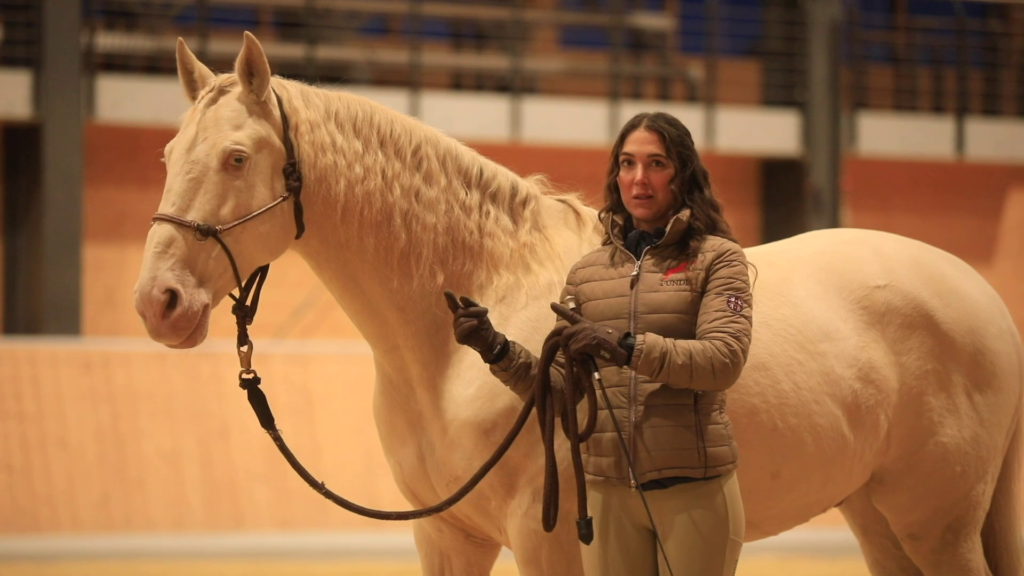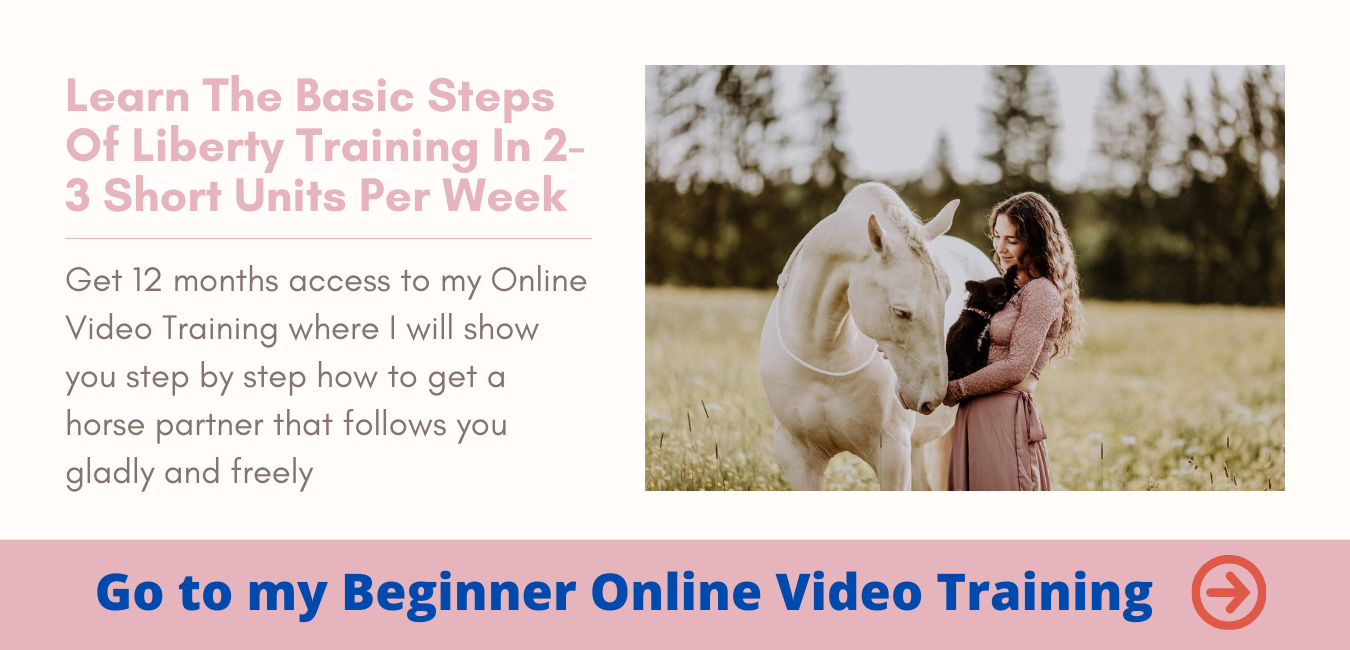It may not seem like it at first, but liberty work also fits perfectly into the cold muddy season.
Depending on the work areas available to you and how your horse is kept, it can happen that your horse becomes surprisingly energized, even in the colder months of the year!
However, galloping on muddy paths is not a good way to get rid of pent-up energy.
That’s why I recommend free work training.
Because this not only challenges the body, but above all the mind!
And keeping your mind and soul busy is actually much more important than just making your horse physically tired through strenuous exercise.
The bottom line: dynamic communication and variety in training keeps your horse fulfilled and focused every day.
So how do I start with free work?
First of all, it must be clear to you that there are fixed rules in free work. Because without rules, polite and empathic communication is simply not possible.
Respect your space.
Everyone has their own individual space that is respected by others.
This means that your horse does not push or shove you, but always keeps an arm’s length away (you determine the distance you feel comfortable with) and only comes closer when invited.
Conversely, you should also respect the fact that your horse may not always want to be touched.
[su_youtube url=”https://youtu.be/vkfLzZPA1J8″]
Give your horse a “comfort position”.
Your horse must not overtake you or be dragged behind you while you are leading.
You give him a “comfort position” (which is approximately at neck level, so that you can see your horse’s facial expression, but there is still enough space to the hindquarters in case of sudden startling and jumping forward).
Your horse should gradually maintain this position on his own through practice.
Be intentional.
From now on, always make a plan in your head before you ask your horse to do something.
This is the only way you can communicate clearly and purposefully – your horse can feel and see your thoughts clearly in your body language.
Then you can start!
Work in a Circle
As soon as your horse holds the comfort position when leading in a straight line at a walk or trot, you can start working in a circle around you.
The distance your horse keeps from you is, of course, up to you.
I like to keep my horses in a tight circle because not only is it the best balance and muscle training, but also the closeness strengthens the bond and gives me the opportunity to react quickly if my horse should drift away.
Fine-tuning in free work is where the magic happens. So with every physical aid you give, remember that you want to make it “invisible” later on.
For example, at some point there should no longer be a rope for you to tug on.
Because the fewer aids you perceive, the easier and more dance-like the free work looks in the end – as if horse and human communicate with each other through invisible aids.
And isn’t that incredibly beautiful?
Engage in Dialogue
Never see free work as simply a “circus lesson” and instead view it as real dialogue.
Then the daily fluctuations of your horse will make more sense to you. Your horse can have a voice and yes, he can also say no sometimes.
It is important that you engage in dialogue with your horse and show him clearly what you want from him.
Then not only will your horse’s head be occupied, but above all your relationship will benefit from the training. The communication will become more and more fine tuned – and yes, at some point you will “understand each other through unspoken communication”.
However, don’t put too much pressure on yourself and your horse, because every horse and every person has their own pace.
So have fun dialoguing with your horse – whether he’s galloping around you or you’re practising leading in the Comfort Position on muddy ground.
I’m sure your horse will thank you for the time you take to be at eye level with him.
All the love,
Your Kenzie




